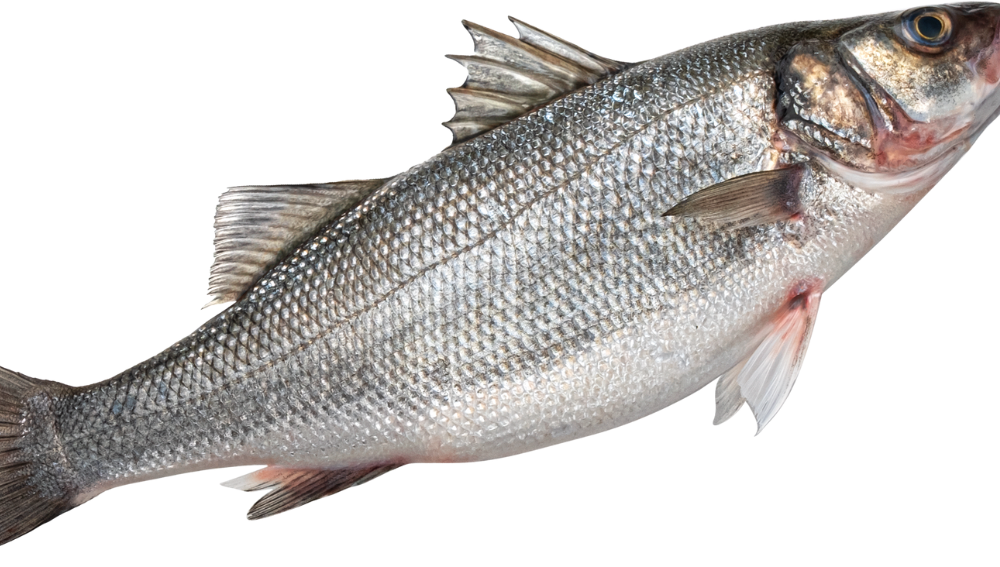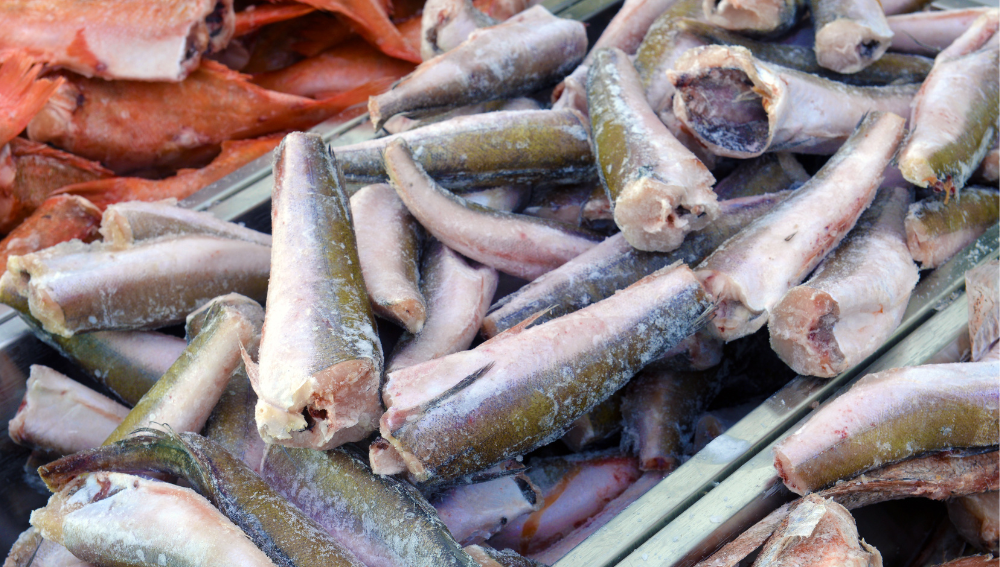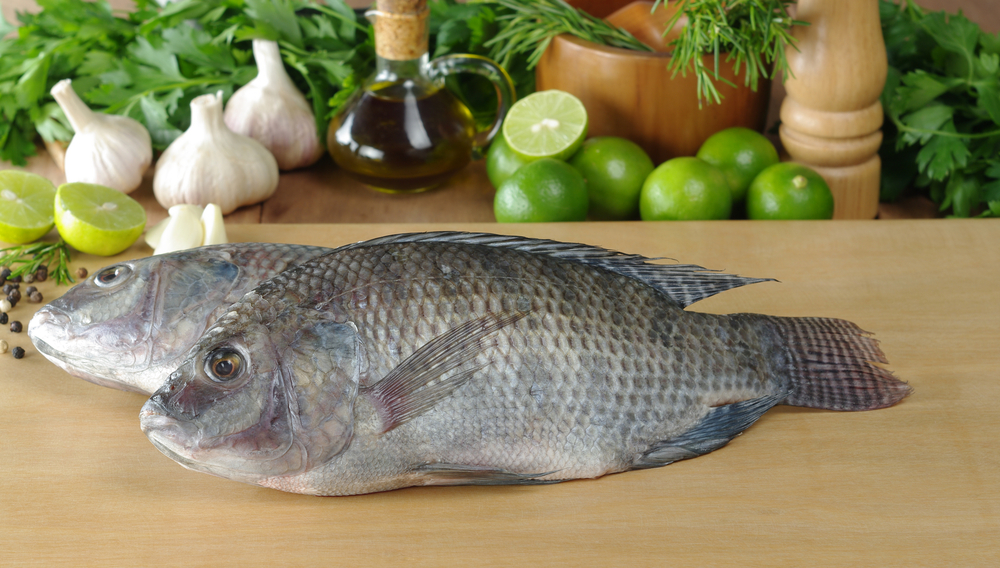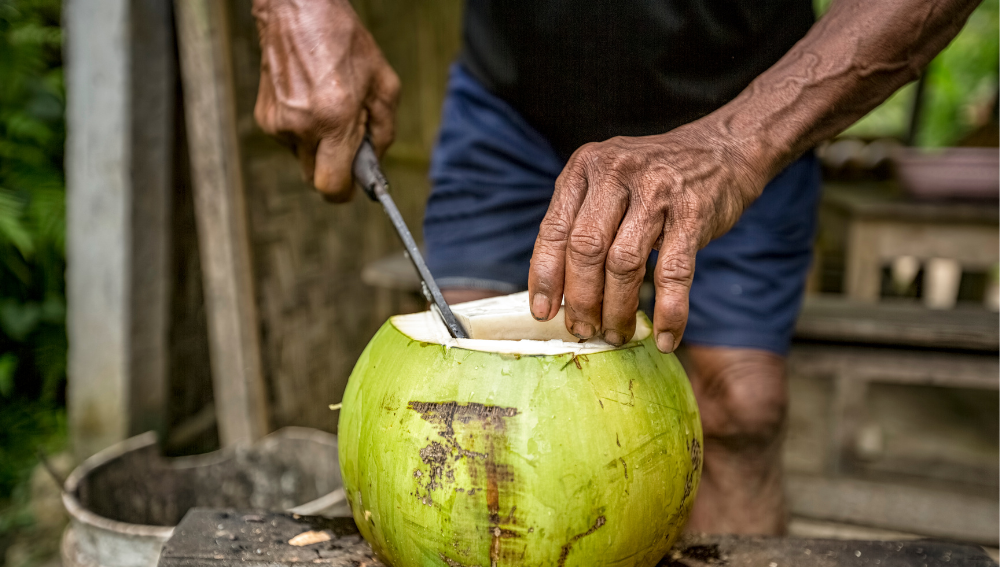Hake is a popular fish choice for many due to its mild flavor, delicate texture, and versatility in various recipes.
However, there are times when you might need to find a suitable alternative, whether it’s due to availability, dietary restrictions, or personal preference.
In this article, we will explore some of the best hake substitutes that you can easily incorporate in your favorite dishes.
Understanding the unique characteristics of hake is essential when looking for an appropriate substitute. It’s crucial to compare the flavor and texture of the alternatives to ensure that they will work well in your recipes.
Additionally, considering each substitute’s nutritional profile, preparation process, and seasoning options will help guarantee a delicious and satisfying meal.
Key Takeaways
- Identify the best hake substitutes based on flavor similarity, texture, nutrition, and cooking techniques.
- Know how to prepare and season hake substitutes to enhance their taste and appeal.
- Learn to incorporate hake substitutes into various recipes while maintaining the original dish’s essence.
Understanding Hake

Hake is a popular white-fleshed fish valued for its flaky texture and mild flavor. It belongs to a group of over a dozen hake species worldwide, with the most common types being Atlantic hake, silver hake, and Pacific hake.
Hake provides a versatile seafood option for various dishes, as it can be baked, grilled, fried or used in soups and stews.
The white flesh of hake is not only delicious but also highly nutritive. It is an excellent source of protein, providing essential amino acids for muscle growth and repair.
Besides protein, hake is low in calories, making it an appealing option for those following a calorie-controlled diet.
Nutrients and minerals found in hake contribute to its health benefits. Some key minerals include iron, magnesium, phosphorus, and selenium, all of which play vital roles in maintaining the body’s overall health and wellbeing.
Hake also contains vitamins such as B12, which aids in maintaining nerve function and red blood cell production.
In the world of seafood, mercury levels are often a concern for consumers. However, hake is known for having relatively low mercury levels compared to other fish species.
This makes it a safer choice for regular consumption, particularly for pregnant women and young children, who are more susceptible to the harmful effects of mercury.
While hake enjoys a well-deserved reputation for its taste, health benefits, and versatility in the kitchen, a good understanding of this fish variety will enable consumers to make informed decisions when it comes to selecting seafood options.
Hake can easily be substituted with other white-fleshed fish, ensuring a delicious and nutritious meal for everyone.
Reasons for Substituting
There are several reasons one might consider substituting hake with alternative fish options. Firstly, the availability of fresh hake might be limited in some areas, leading consumers to look for suitable alternatives.
Frozen hake is a possibility; however, the quality and taste of frozen fish may not be as satisfying as fresh fish.
Additionally, if hake is not widely available in one’s region, they may be less familiar with its taste and texture, encouraging experimentation with other varieties.
Sustainability is another significant factor behind the search for hake substitutes.
Global fish populations are under pressure due to overfishing and environmental changes, making it increasingly important for consumers to choose sustainable seafood options.
Organizations such as Seafood Watch, a program by the Monterey Bay Aquarium, evaluate and recommend sustainable fish selections.
By choosing fish that are endorsed by Seafood Watch, individuals can ensure they are consuming seafood from well-managed and eco-friendly sources.
Furthermore, dietary preferences and restrictions play a role in seeking hake substitutes. Some consumers might have allergies or intolerances to certain types of fish, while others may have a preference for specific textures or flavor profiles.
By exploring various fish options, consumers can discover new seafood experiences while accommodating their specific needs and tastes.
Lastly, price can be a factor when considering replacements for hake. The cost of hake may vary depending on the region, season, and fish population, leading consumers to look for more affordable alternatives that still provide a similar taste and texture.
It is important, however, to maintain a balance between affordability and sustainability when selecting alternatives to hake, ensuring that the fish populations remain viable for future generations.
Top Hake Substitutes

When searching for the best hake substitute, there are several white fish options that can closely match hake’s flavor and texture.
Hake is known for its mild taste, fine texture, and smaller flakes. Below are some top hake substitutes to consider for your next recipe.
Cod and haddock are both firm, white fish that have mild flavors similar to hake. They can easily be swapped in for hake in most recipes. These fish are available as fillets and are ideal for baking, frying, or poaching.
Halibut and sea bass are also great alternatives, as they both have a delicate flavor and firm texture. These fish types can be found as fillets or steaks and are perfect for grilling, broiling, or pan-searing.
For a slightly different flavor profile, try salmon or trout. Although these fish have a stronger taste than hake, they can still work well in certain recipes. The richer flavor can complement other bold ingredients.
Pollock and whiting are two additional white fish alternatives with a mild flavor and flaky texture. Like hake, they are commonly sold as fillets and can be cooked in a variety of ways, including pan-frying or broiling.
Tilapia and grouper share a similar texture to hake but may have a slightly stronger flavor. These fish can be found as fillets and are suitable for baking, grilling, or pan-frying.
Other potential hake substitutes include flounder, striped bass, mahi mahi, and red snapper. These fish types have a more firm texture but still offer a mild flavor profile suitable for most recipes.
In summary, there are many available fish substitutes for hake, each offering its unique qualities. It’s essential to consider the specific recipe and desired taste and texture when choosing the most suitable hake substitute.
Comparing Flavor and Texture
When it comes to finding the best hake substitute, comparing flavor and texture becomes crucial. Hake is known for its mild, subtly sweet taste and delicate, tender texture. It’s important to find a fish that can closely mimic these characteristics.
One potential substitute for hake is cod. It shares a similar mild and slightly sweet taste with firm yet tender flesh. It easily flakes apart when cooked, making it a suitable alternative for most hake recipes.
Another option is pollock, a fish that’s gaining popularity for its sustainability. With a slightly stronger flavor than hake, pollock still falls under the mild category, delivering a taste that won’t overpower a dish.
Its texture, similar to cod, consists of tender and flaky white meat.
Haddock also makes a good substitute for hake. Both fishes belong to the same Gadidae family, resulting in comparable flavors and textures.
Haddock possesses a clean and mild taste with a subtle sweetness complementing its slightly firmer texture compared to hake.
Tilapia is another contender when it comes to replacing hake. It has a mild, delicate flavor with a hint of sweetness, similar to hake.
Its texture is tender yet slightly more dense. However, its versatility and affordability make it a popular choice among fish lovers.
Finally, halibut can be considered a suitable option for hake substitution, though its flavor tends to be more pronounced and buttery.
The texture of halibut is noteworthy, including dense flesh that remains moist and tender even after cooking. While not an exact match to hake, halibut brings additional richness to the table.
In summary, various fish options may serve as substitutes for hake, depending on individual preferences and the desired outcome in a recipe.
While no alternative is exactly the same as hake, these options come close in terms of flavor and texture, ensuring a satisfying and delicious result in your dish.
Preparing and Cooking Substitutes
When looking for the best hake substitute, it is essential to consider how you prepare and cook the fish. Many types of fish can substitute hake, such as cod, halibut, and pollock.
A crucial aspect to remember when preparing and cooking these alternatives is their cooking times and methods.
Frying is a popular method for cooking hake substitutes. To ensure proper cooking, it’s essential to heat oil in a pan and make sure it reaches the desired temperature before adding the fish.
Lightly season the fish with salt and pepper or your preferred seasoning and cook each side for about 2-4 minutes, depending on the thickness of the fillet.
Baking is another excellent method for cooking hake substitutes. Preheat the oven to 400°F (200°C). Season the fish with salt, pepper, and any desired herbs and spices, then place it on a baking sheet lined with parchment paper.
For optimal results, bake the fish for 10-15 minutes, or until it flakes easily with a fork. Keep in mind that the required cooking time may vary depending on the type and thickness of the fillet.
When it comes to grilling hake substitutes, preheat the grill to medium-high heat. Brush the fish with oil and season with your preferred spices or herbs.
Cook the fish for approximately 2-4 minutes per side. Make sure to watch for flare-ups and flip the fish gently to avoid breaking the fillet.
Broiling is a suitable option for cooking hake substitutes as well. Preheat the broiler and position the oven rack about 4 inches from the heat source.
Lightly oil the fish and season with your desired herbs and spices, then place it on a broiler pan. Broil for about 5-10 minutes, depending on the thickness and size of the fish, until it’s cooked through and flakes easily with a fork.
Regardless of the cooking method you choose for your hake substitute, be sure to thoughtfully select your seasonings that complement the fish and the dish you’re preparing.
Taking care of cooking times and adjusting them based on the fish type and thickness ensures a delicious and well-cooked substitute that can rival a classic hake recipe.
Nutritional Profile Comparison

When looking for the best hake substitute, it is essential to consider the nutritional profile of the alternatives. In this section, we will compare and contrast the nutritional profiles of some common fish substitutes and their content of omega-3 fatty acids and fat.
Cod is a popular hake substitute due to its similar texture and taste. It has a lower amount of omega-3 fatty acids compared to hake. However, it is still a good source of these essential fatty acids.
The fat content in cod is relatively low, making it a lean fish option for those wanting a healthier choice.
Pollock is another fish that can replace hake in various recipes. It contains slightly less omega-3 fatty acids compared to hake, but it is still a good source.
The fat content in pollock is similar to that of hake, thus making it a suitable substitute in terms of fat intake.
Tilapia is a versatile fish that can work as a hake substitute in several dishes. However, it has a considerably lower omega-3 fatty acid content.
Despite this, it is still a good source of other vital nutrients. The fat content of tilapia varies depending on its habitat, but it is generally considered a lean fish.
Halibut offers a firmer texture as a hake substitute but has a comparable nutrient profile. It contains a substantial amount of omega-3 fatty acids, making it an excellent choice for those looking for a heart-healthy option.
The fat content in halibut is higher than in hake, but still falls within the range of healthy fat intakes.
In summary, each fish mentioned above has its unique nutritional profile, with some having higher or lower levels of omega-3 fatty acids and fat compared to hake.
It is important to select a substitute based on individual dietary needs and preferences, while considering the omega-3 fatty acids and fat content of the fish.
Perfect Seasoning For Substitutes
When looking for the ideal seasoning for fish substitutes, like hake, it’s important to consider a combination of flavors that enhance the dish without overpowering it.
A balanced blend of seasonings will bring out the best in your substitute, ensuring a delicious meal.
One popular seasoning combination is to use salt, black pepper, and lemon juice. This trio works well in many fish dishes, providing a flavorful base while highlighting the natural taste of the fish.
For a richer flavor, consider cooking your substitute in a mixture of butter, olive oil, and garlic. This not only adds depth to the dish but also helps keep the fish tender and moist.
Adding some onion, carrot, and peppers can further enhance the taste and texture of the recipe.
Incorporating herbs like dill, bay leaves, and lemon zest can add a fresh, aromatic element to your dish. Dill is especially popular in fish recipes, as its light, feathery taste complements the natural flavor of the fish.
Bay leaves add a subtle but distinct aroma, while lemon zest brings a zesty note that cuts through any richness.
When it comes to serving the hake substitute, consider a bed of lemon couscous or a creamy sauce to accompany it.
Lemon couscous provides a light, citrusy contrast to the fish, while a cream sauce can round out the flavors and add an indulgent touch to the meal.
Lastly, don’t forget the importance of presentation. Wrapping the fish in foil can help retain moisture and make for an attractive presentation.
Likewise, a colorful garnish of sautéed peppers or a sprinkle of fresh herbs can elevate the appearance of the dish and make it even more tempting for diners.
By using this selection of ingredients and techniques, you can create a perfectly seasoned hake substitute dish that will impress even the most particular palates.
Enjoying Hake Substitutes In Recipes

Hake is a popular choice in many fish recipes due to its mild flavor and flaky texture. However, there are times when hake is unavailable or when one might prefer to experiment with alternative options.
In such cases, several hake substitutes can be used in existing recipes to achieve similar results.
Whiting fish is an excellent substitute for hake, as it has a similar delicate flavor and tender texture. It can be used in a variety of dishes, such as fish fingers and fish cakes.
To prepare fish fingers using whiting fish, simply coat the fillet pieces in breadcrumbs and pan-fry or bake until golden and crispy.
For fish cakes, combine flaked whiting fish with mashed potatoes, onions, and herbs before shaping into patties and frying.
Another tasty option for a hake substitute is lobster, especially when preparing more luxurious recipes. Lobster has a slightly sweet flavor and firm texture that works well in dishes where a more robust seafood taste is preferred.
It can be used in bisques, pasta dishes, and even lobster rolls.
When using lobster as a substitute, it’s essential to adjust cooking times accordingly, as lobster meat cooks faster than hake and may become tough if overcooked.
In fish recipes where texture isn’t as significant of a factor, fish cakes offer a versatile and delicious option. Fish cakes can be made with various hake substitutes like whiting fish, cod, pollock, or even a combination of different fish types.
This flexibility allows them to be incorporated into a wide range of recipes, from traditional fish and chips to more exotic Thai fish cakes.
There are countless ways to enjoy hake substitutes in fish recipes, catering to varied personal tastes and preferences.
By experimenting with different options like whiting fish, lobster, or fish cakes, one can discover new and delightful dishes that don’t rely on hake as the primary ingredient.
Frequently Asked Questions
What is a good alternative to hake when making a salmon dish?
A suitable alternative to hake in a salmon dish would be a firm, white-fleshed fish like cod or halibut. These fish have a similar texture and flavor profile to hake, and they can hold up well when cooked in a variety of ways, such as grilling, baking, or pan-searing.
Which fish can be used in place of hake for a cod recipe?
When substituting hake in a cod recipe, one could opt for pollock, haddock, or even sea bass. These fish have a comparable taste and texture to hake and cod, making them ideal for a variety of cooking methods and flavor combinations.
How do I find a suitable fish to substitute for hake?
To find a suitable fish substitute for hake, one should consider the flavor profile and texture of the fish they want to use.
Some factors to keep in mind include the dish’s original flavor, cooking method, and the desired final texture. White fish with mild flavors and firm textures are generally the best choices for substituting hake in a recipe.
Which fish has a taste similar to hake?
Fish with a taste similar to hake include cod, pollock, and haddock. These fish have a mild, delicate flavor and a firm, white flesh that closely resembles the taste and texture of hake.
They are versatile and can be prepared in various ways, such as baking, frying, or grilling.
What is the American equivalent of hake?
The American equivalent of hake could be considered Atlantic cod or Pacific whiting. Both of these fish are commonly found in American waters and have a similar taste, texture, and appearance to hake.
Although not identical, these two fish are viable alternatives for recipes calling for hake.
Are tilapia and hake the same fish?
Tilapia and hake are not the same fish. While both are white-fleshed fish with a mild flavor, they belong to different families of fish.
Hake is a member of the cod family, while tilapia belongs to the cichlid family. Although their flavors might be similar, tilapia tends to have a flakier texture and is not as firm as hake.







